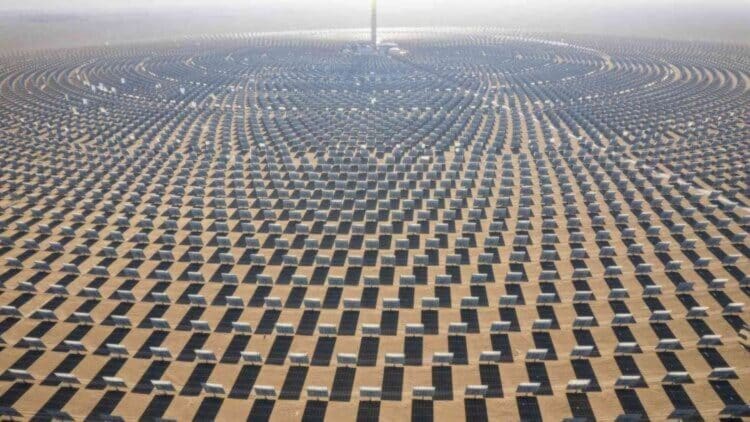China is building a giant power wall in an area where maps display merely dunes. China is setting its sights on a massive 455 GW offering in terms of solar and wind capacity across its northern deserts. This vast energy potential stretches into regions such as Inner Mongolia and the Kubuqi Desert, which were once merely places of desert dunes. A transformation is well underway in China that is inspiring the rest of the world.
Sandstorms and desert dunes are transforming into solar potential
China’s 455 GW desert initiative is reminiscent of the Three Gorges Dam project in size and magnitude and is an initiative part of the country’s carbon neutrality ambitions. The photovoltaic (PV) build-out in the Shagehuang desert zone expands to parts of Inner Mongolia, Ningxia, and Gansu as well.
Beyond mere energy generation, such solar installations also hold the possibility of stabilizing the dunes, resulting in slower desertification. Already, landscapes have been reshaped in the Kubuqi Desert with a single project spanning over 30 square kilometers and having 3,4 million solar panels. The PV Great Wall is planned to be a 400-kilometer-long solar belt in the Kubuqi Desert producing 100 GW of clean electricity, which is a rather ambitious mission.
The Great Solar Power Wall offers immense power
The Great Solar Power Wall is not only large but also a largely strategic wall. The Northern desert is rich in solar irradiance and land availability, and the majority of China’s population seems to be located in the east and south. Thanks to ultra-high-voltage (UHV) transmission lines, these gaps between the desert and the people will be bridged. Gigawatts of power can be transported over thousands of kilometers with minimal losses. In this way, renewable energy from the desert sun will flow into Beijing, Shanghai, and Guangzhou, powering homes and factories. Solar and wind power will be integrated at scale with a continental battery responsible for charging it in the daylight dunes, and discharging power thereafter.
The focus on a solar strategy in the desert sand
The focus is on solar strategy for energy production, along with ecological restoration in the process. With the large solar arrays placed in the desert, wind speeds can be reduced, soil and water evaporation rates can slow down, and vegetation growth can be encouraged, even in places like Ordos City, where satellite footage shows more ground cover since PV farms were installed.
China is now leading the climate-smart energy strategy, whereby the desert is turned into something more purposeful than just dunes. The climate holds potential, and China is ready to tap into it. With a $48 billion investment to build the Great Solar Wall, China is looking to power up the entire planet.
China’s solar strategy is above the rest and inspires all
Harnessing 455 GW from the desert dunes and considering solar and wind power like no other country, China’s Solar Wall plan is much more than just wonderful. Thanks to China, environments that have for so long been untapped are now turning into power plants and powerful energy sources that can regenerate the land. China’s desert ambitions may provide somewhat of a guide for other countries that wish to replicate this solar power and wind power initiative.
Already, the Middle East and Africa are considering similar initiatives and are looking at the ecological as well as the technical frameworks of China’s ambitious projects. Deep in the desert that once housed dunes, the sun is shining on the potential to move towards a greener future. China starts construction of the Solar Great Wall, with the 100 GW desert belt fully rewriting the grid.





